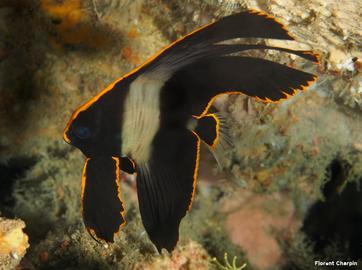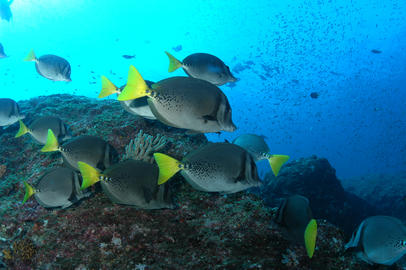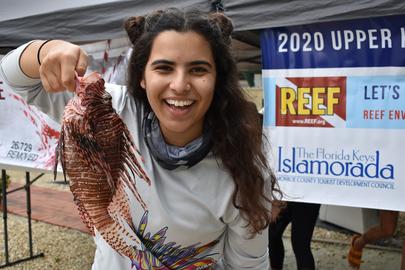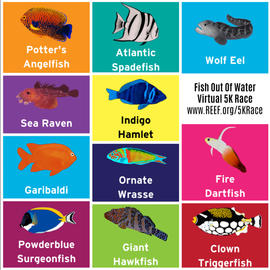To get you in the mood for Halloween, meet our spooky October Fish of the Month - the Pinnate Spadefish, Platax pinnatus!
This paper, a chapter in a book on Marine Disease Ecology, focuses on global disease outbreaks that have resulted in mass mortality events that have subsequently impacted marine communities. One of the four case studies in the paper is the Sea Star Wasting Disease (SSWD) event that impacted the west coast of the US and Canada beginning in 2013. Data collected by REEF surveyors in this region on several species of echinoderms have been the basis of multiple published studies on the impact of SSWD. These studies are referenced in the book chapter.
REEF updates including a project in The Bahamas, the Volunteer Fish Survey Project's expansion to the TEP, and addition of inverts to the PNW region.
This special Southern Safari charter aboard the Rocio del Mar is only offered by request and provides a chance to experience the unique rocky reefs and pinnacle dive sites of southern Baja including Espirtu Santo, Los Islotes, and Isla Cerralvo, also known as Jacques Cousteau Island.
KEY LARGO, FLA. – In spite of Tropical Storm Sally’s unexpected appearance over south Florida, 23 teams took to the water this weekend, bringing in a total of 1,321 invasive lionfish during the 2020 Upper Keys Lionfish Derby; the most fish ever harvested at a REEF Lionfish Derby held in the Florida Keys. Teams were permitted to fish anywhere in Florida, from sunrise to sunset on Friday, Sept. 11 and Saturday, Sept. 12. More than $4,000 in cash and prizes was awarded to teams who brought in the most, largest, and smallest lionfish.
Join us on Zoom for a casual get-together to meet your fellow team and race mates. (you can even size up the competition!) If you've received your race materials and wish to wear your shirt, that would be fun.
REEF’s in-person programming is on hold until further notice, but there are still ways you can stay engaged in marine conservation from home.
2020 Underwater Photo Contest Winners
Thank you to everyone who voted in our 2020 Underwater Photography Contest! We had over 170 photos entered this year and over 1,500 votes cast. Check out the winning photographs in each category here. Congratulations to all of the winners!





